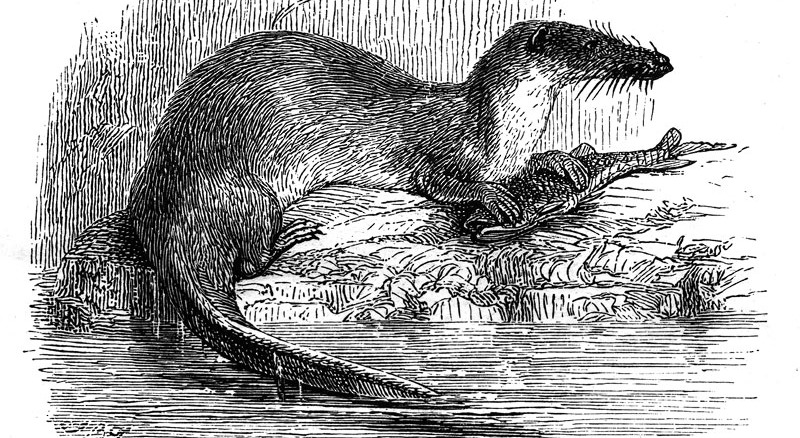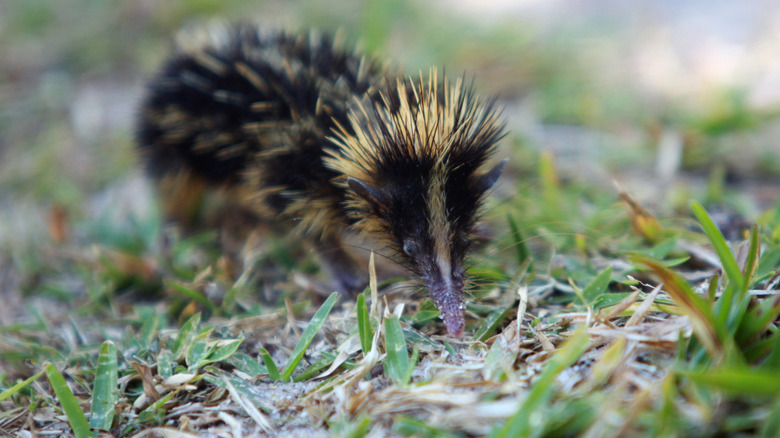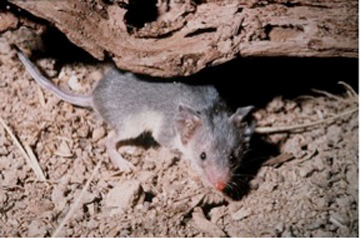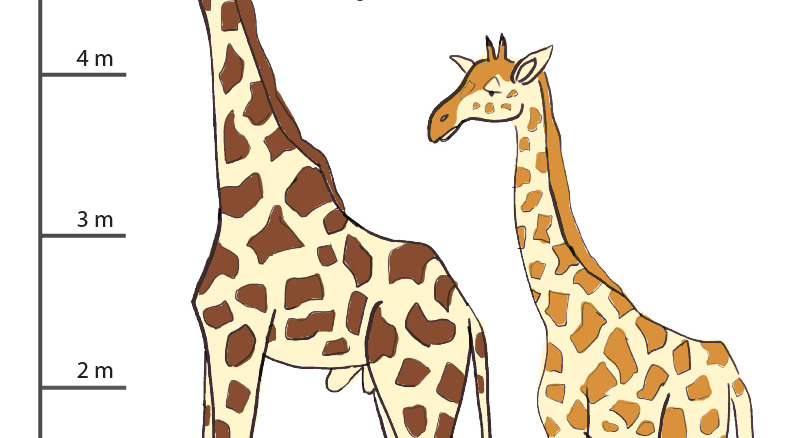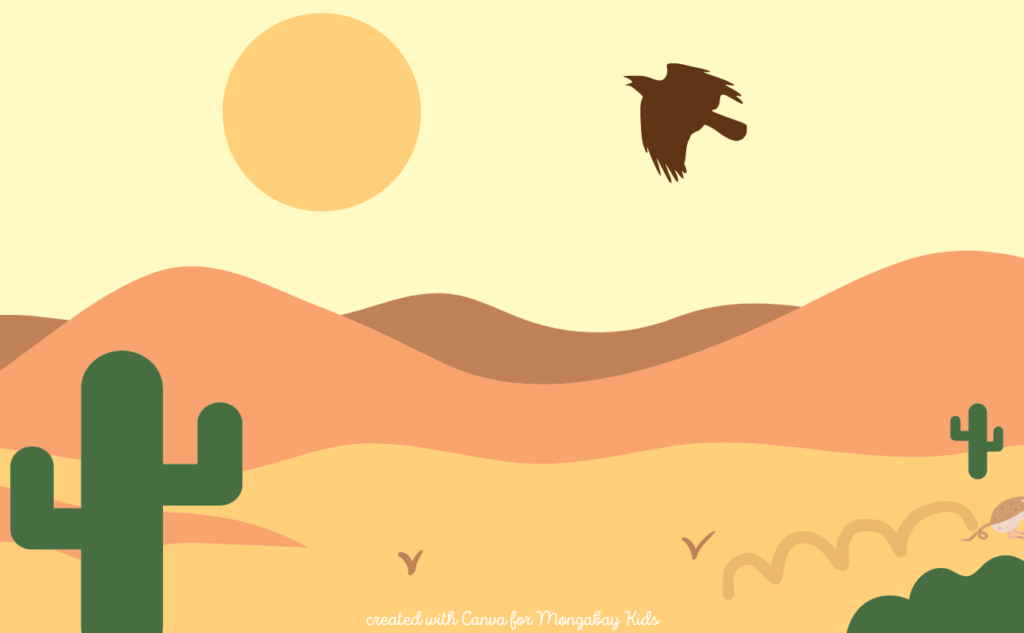
On a trip to the desert you climb to the top of a large sand dune. You take in the view around you. You see a cactus and desert wild flowers. A raven flies overhead. A small animal hops across the dune. It has a long tail and big feet.
Bounce, bounce, bounce …

“It’s a kangaroo!” you shout.
You then remember that you aren’t in Australia and you realize that the “kangaroo” is actually the size of a mouse.
“What is going on here?!!” you think.
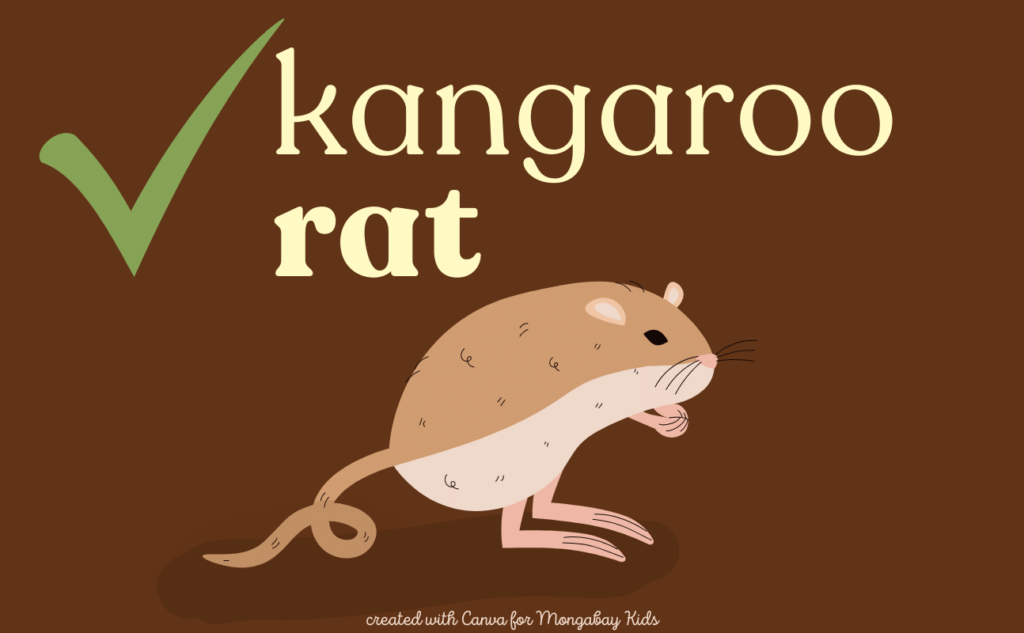
You are looking at a kangaroo rat. Kangaroo rats are rodents that live in the deserts and other dry habitats of western North America. Their back legs are long and built for jumping, like the legs of a kangaroo.
Meet the kangaroo rat:

A kangaroo rat in New Mexico. Image: Bcexp, CC BY-SA 4.0, via Wikimedia Commons
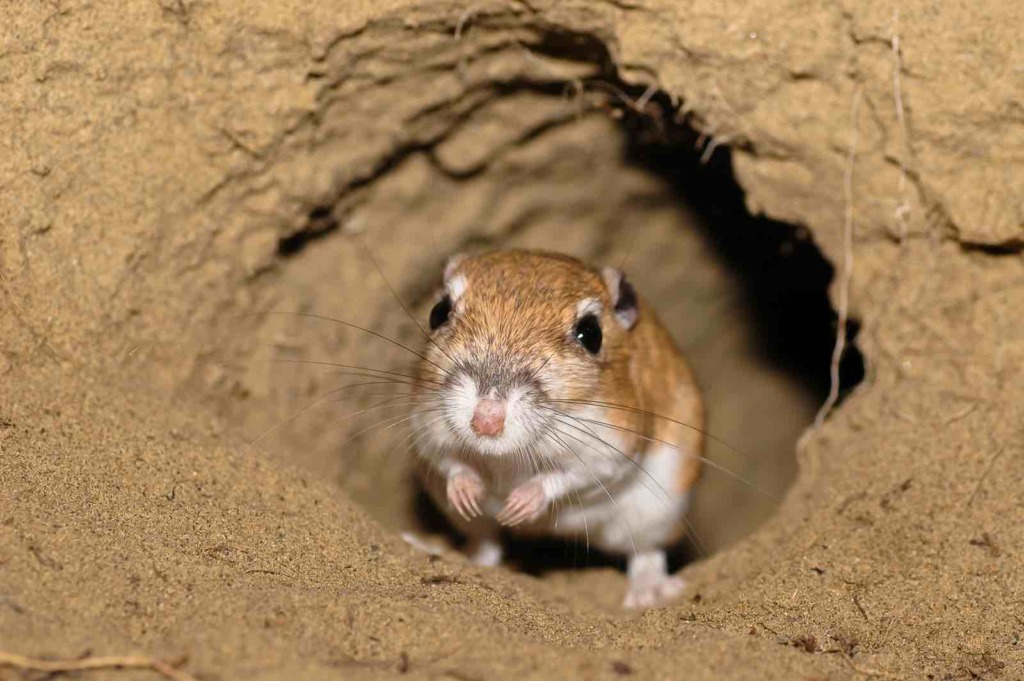
Ord’s kangaroo rat at the entrance to a burrow. Image: Andy Teucher, CC BY 2.0
There are about 20 different kinds of kangaroo rats, belonging to the genus Dipodomys. You’ve spotted the giant kangaroo rat, the largest species, which lives in the San Joaquin Valley of California.
A giant kangaroo rat:
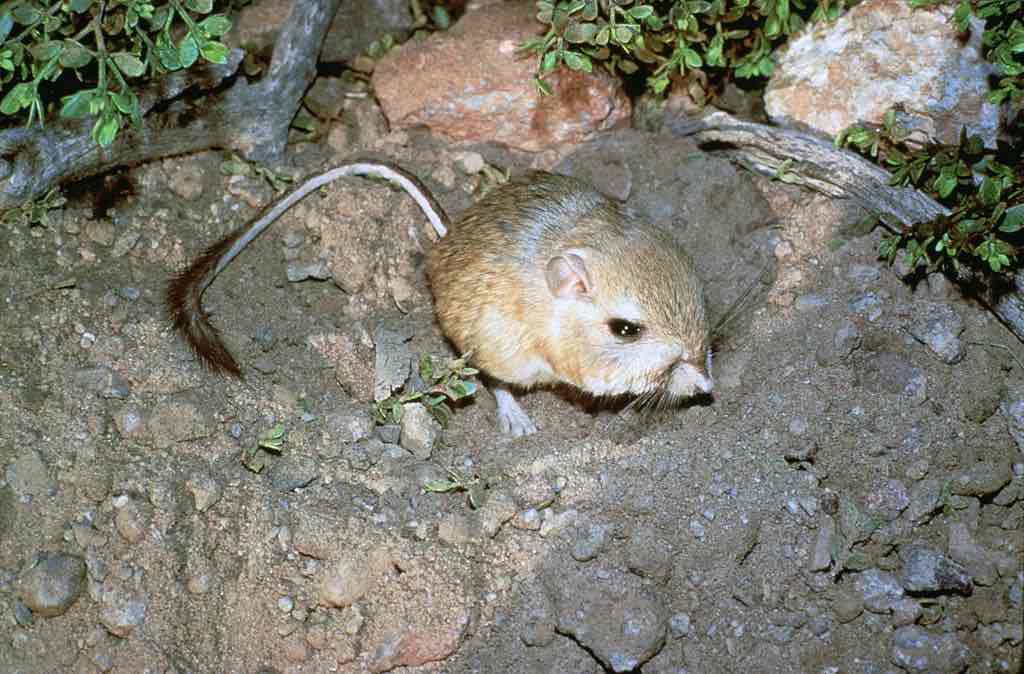
Giant kangaroo rat (Dipodomys ingens); Harrison, George, Public domain, via Wikimedia Commons
The giant kangaroo rat is now an endangered species because most of its habitat has been transformed into farms and cities, but populations still exist. Scientists and wildlife agencies are trying to increase giant kangaroo rat numbers.
The days and nights of a kangaroo rat:
Kangaroo rats live in burrows in sandy soils that are easy to dig in. The kangaroo rat spends most of its days underground and its nights out hopping around looking for food. Their nocturnal behavior allows them to sit out the hottest parts of the days in their arid homes.
Kangaroo rats mostly eat the seeds of grasses and other plants. They gather seeds and store them in their burrows or bury them near the burrow entrance. These stores of seeds are called caches and a kangaroo rat may sometimes defend its caches from other kangaroo rats trying to steal them.
If a kangaroo rat has a seed cache stolen, it is losing not only its food, but its water too. Kangaroo rats do not have to drink! They get all of their water from the seeds and vegetation that they eat.
Kangaroo rats have to worry not just about eating, but also about not being eaten. Badgers, coyotes, kit foxes, owls, and rattlesnakes all eat kangaroo rats. The seven to eight foot leap of the kangaroo rat is useful for escaping predators.
The next time you are in the deserts of North America and see something bounce by you, you will know that you aren’t imagining things.
By David Brown


